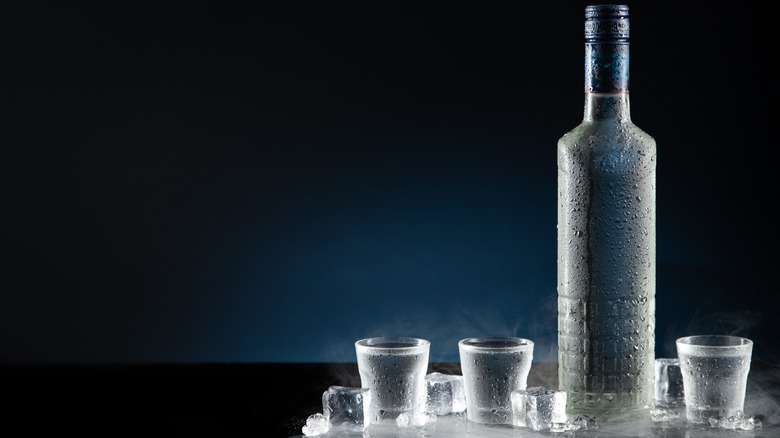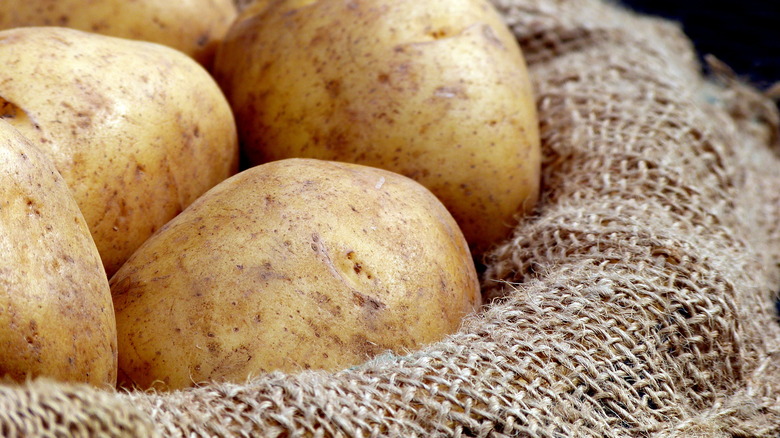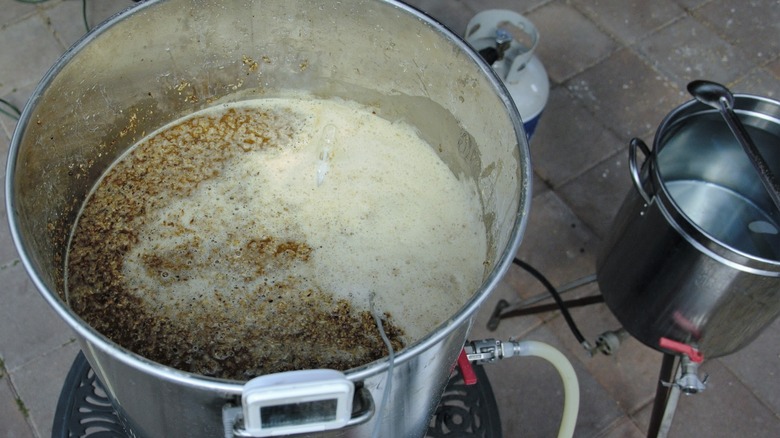The Unique Way Liquor Becomes Vodka
Oh, vodka. What would life (and the liquor cabinet) be without it? As the most consumed liquor in the United States since the 1970s, per CNBC, vodka raked in over $7 billion in 2021. Its popularity is well-deserved: Vodka functions brilliantly in anything from dirty martinis to fruity Cosmopolitans, White Russians to Bloody Marys, and countless other classic cocktails. It makes possible special dishes like penne alla vodka and vodka chicken parm (yes, you heard that right ––and it comes in sandwich form, according to TikTok). Mixologists and home drinkers alike can depend on the spirit's neutral flavor and versatility as a blank liquor canvas; it effortlessly turns even the humblest soda or juice into a refreshing hard beverage.
And this one-size-fits-all spirit has utilitarian origins. Vodka originally comes from Europe (Russia, Poland, Sweden, and Finland make up the "vodka belt," according to MasterClass), and can be fermented from just about anything. Beyond its core ingredients, vodka's creation is less surrounded by regulations and lore than whiskey, but there are still rules that must be obeyed for a distilled liquor to be called vodka. Here's the story of how that happens.
What is vodka?
According to Britannica, vodka is a colorless, transparent distilled liquor (more on distillation later) without a specific taste or smell, containing about 40% to 55% alcohol. That translates to 80 to 110 proof (measured by doubling the alcohol content, per MasterClass) — though vodkas above 100 proof are not as widely consumed as those with lower alcohol content, says vodka maker Khor.
Britannica further explains that vodka was first fermented from inexpensive and plentiful ingredients, including grains (most popularly, wheat, rye, and corn, says Liquor Laboratory). Other contenders include fruit (like French grape-based Ciroc) — though fruit-fermented vodkas are not to be confused with flavored vodkas like Swedish winter wheat-based Absolut, which have the fun flavors added in later.
But perhaps most famously, vodka can be made with potatoes. Yes, good old spuds. Boil 'em, mash 'em, stick 'em in a bottle — after an extensive process, of course. In truth, though, despite its sophisticated drinkability, potato vodka has become less widely used, with potatoes viewed as a lesser and more challenging ingredient choice, according to Liquor.com. But whichever base you're using, how does liquor get from spud (or grain, or grape) to vodka?
How is vodka made?
WebMD states that for liquor to bear the name "vodka," it must first reach 190 proof, or 95% ethanol, before being diluted to 70 to 80 proof for commercial sale (American standards demand an 80-proof minimum, or 40% alcohol). Here's how that science-slash-magic happens. According to MasterClass, traditional vodka needs just two components: water and the natural ethanol produced from the fermentation of grains or other base ingredients.
These ingredients are fermented using water and yeast (this is called a "mash," and a potato pun is brewing here), which sits for a week or so. Then the distillers remove the solids and wind up with "pure, liquid alcohol," states MasterClass. This is where that initial 95% ethanol or 190-proof rule comes in. The distillers do what they do best: distillation, which purifies the liquid by repeatedly evaporating and condensing it, removing impurities in the process. Vodka makers may opt to distill multiple times for a smoother finish, add flavors, spices, or botanicals to their brews, or perform an optional filtering step, per MasterClass.
After these steps, the liquor must be diluted from nearly 100% alcohol all the way down to whatever ABV the vodka makers are looking for. Et voilà! That's the spirit.


